Digital projection lights up Melbourne Knowledge Week
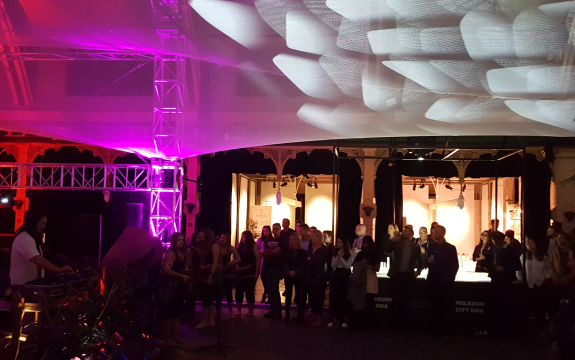
In Summary
- Watershed work transformed event space and connected events at Melbourne Knowledge Week
- Classic watershed mathematics and cellular imaging informed projection design
- Negative space was key to a layered holographic look
A massive digital projection onto 25 metres of orchard tree netting at North Melbourne’s Meat Market formed a vibrant centrepiece at Melbourne Knowledge Week 2018.
Innovation Fellow at the Swinburne Innovation Precinct and lecturer in Digital Media Design, James Berrett, was approached by Grimshaw Architects to design the projection.
Melbourne Knowledge Week is the City of Melbourne’s unique annual festival for a smart and innovative city where Melburnians are invited to explore ideas for the future together.
Grimshaw’s brief was to design a large-scale digital projection for the net structure to support the theme of Watershed, referencing water and the movement of ideas. The netting spanned over 25 metres with a width of 10 metres and height of eight metres.
Mr Berrett worked with classic watershed mathematics and cellular imaging to inform the projection design. Watershed image processing has many practical uses in Magnetic Resonance Imaging, cellular biology and scientific studies of fish eggs.
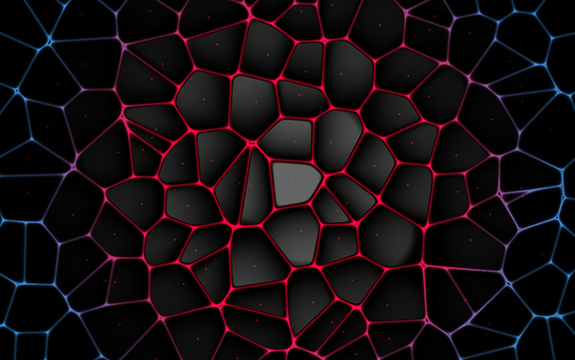
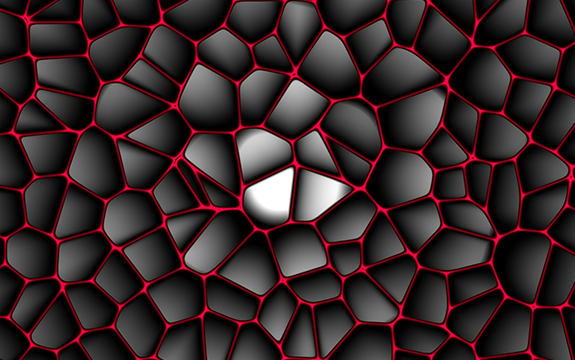 Watershed imagery.
Watershed imagery.
“Watershed mathematics are used in image processing to segment features by representing pixel brightness as height, creating a topographic map of an image. By ‘mathematically flooding’ the map, lines that run along the tops of ridges are highlighted, helping to identify discrete features,” Mr Berrett says.
He created a projection simulation space based on Grimshaw’s plans, and using a section of net he tested how digital light projection would work.
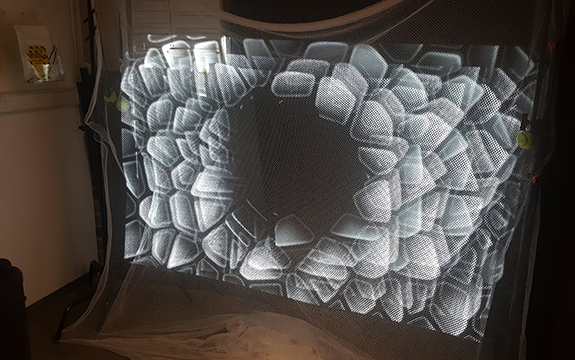
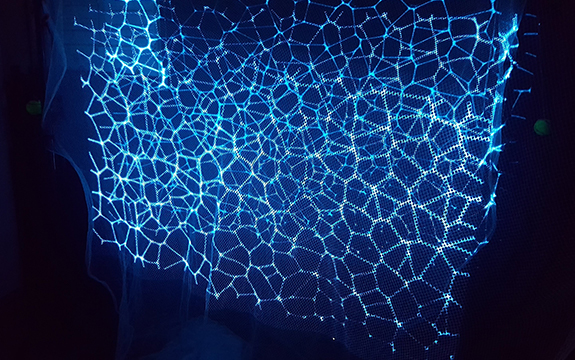 Lab simulations of projection onto netting at Swinburne.
Lab simulations of projection onto netting at Swinburne.
“The simulation enabled us to plan how many projectors to use, the optimal position and types of projectors and lenses needed to cover the net surface,” Mr Berrett says.
Simulations determined that video footage looked too busy and unclear and content made up of particles looked noisy and bland. This clarified that the design needed to use the layered holographic effect produced by projections onto the net. Animation speed was also set so it created atmosphere without being too distracting.
“The use of negative space was key to give the content a layered holographic look,” says Mr Berrett.
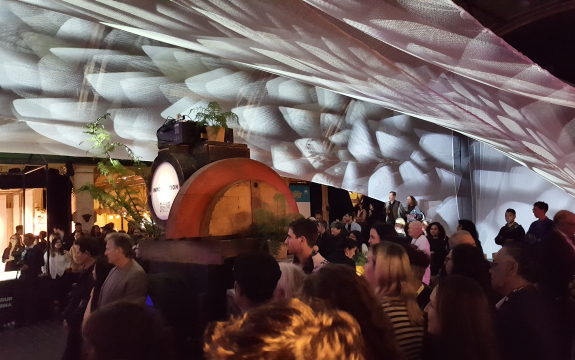
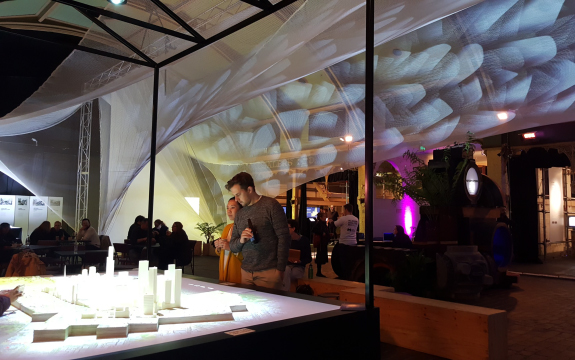 Projection phase showing negative space and a layered holographic.
Projection phase showing negative space and a layered holographic.
Mr Berrett wanted to create something new and completely different that had substance and would make people ask questions and provide intrigue.
Watershed transformation does not typically move. The watershed movement was designed to be subtle and slow and was calculated using randomly generated variables.
The movement of blue cell shapes in the projection showcases the lower point of the cells as a red dot. This is then filled with colour and light to the point at which it meets joining cells.
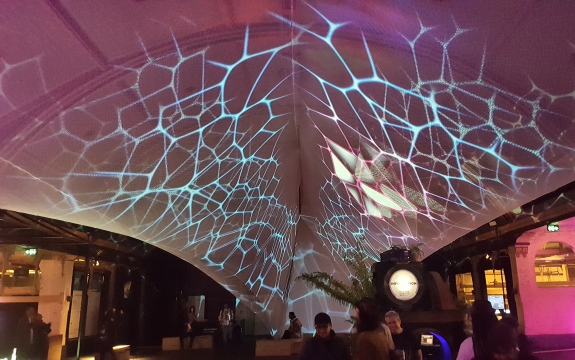 Blue cell shapes in the projection.
Blue cell shapes in the projection.
The Watershed work transformed the event space and connected the events and discussions during the Melbourne Knowledge Week program.
The project involved multiple collaborators including Swinburne, Grimshaw Architects, City of Melbourne, Supa Dupa Industries, Arup, Melbourne Knowledge Week, the Meat Market, and Melbourne Water.

